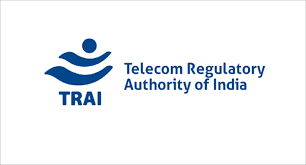
Barely six months after implementing the New Tariff Order, TRAI is now in the midst of changing the rules again
It has barely been six months since the Telecom Regulatory Authority of India (TRAI) implemented the New Tariff Order (NTO) enabling customers to select TV channels of their choice, and the regulator is now in the midst of changing the rules again. TRAI has floated a consultation paper inviting comments from stakeholders on tariff-related matters. In the paper, TRAI has highlighted issues such as bundling of channels under bouquets and excessive discounts.
But will this inconsistency and frequent migration from one tariff plan to another leave the end user inconvenienced?
According to a broadcaster, this whole shifting from one plan to other in a gap of 6-8 months will irritate the customer and may eventually lead to loss of business. “Consumers want to watch channels without any disturbance. What channels broadcasters are bundling up or what rules TRAI is coming up with generally doesn’t concern them,” says he.
TRAI’s new tariff regime, implemented in earlier this year, allowed viewers to select the channels they wanted to watch and pay the maximum retail price (MRP) set by broadcasters for each channel or for a bouquet of channels. So, why is TRAI thinking of a new tariff order again?
According to the consultation paper on tariff-related issues for broadcasting and cable services, at present, pay channels offer a package deal to the MSOs and the MSOs transfer the same to the subscribers. Even in CAS areas, compared to a bouquet of channels offered by the broadcaster, an individual channel is priced in such a manner that subscribers do not have a real option to choose channels on a-la-carte basis. The committee set up by TRAI to look into the matter decided that the issue needs to be regulated.
The paper said the committee also felt that in order to give effective choice to the consumer, there should be a cap on the bulk discount (i.e. the discount if the entire bouquet is bought as against the sum of prices of the individual channels) being offered on the bouquet. Similarly, a cap should also be considered for the ratio of individual channel price to the overall bouquet price.
However, not all agree with TRAI on this. Some industry players feel the regulator should have let the tariff rule unchanged for at least 2-3 years.
“Don’t we get soap free with toothpaste? Isn’t a buffet always priced less than the total of all the items if ordered a-la-carte? Bundling is a fundamental right of any business. We believe TRAI should let the recently implemented tariff order in place for at least 2-3 years before reviewing it. This will lend a stable regulatory regime, which is utmost important for the growth of any industry,” reasons Rohit Dokania, Senior Vice President-Research, IDFC.
According to Dokania, there shouldn't be any changes in the bundling options for broadcasters because that would disturb the balance in the industry and could be legally challenged. “Though there is a possibility of the new order tweaking the MRP. The MRP of popular channels at present have a maximum permissible limit of Rs19. This upper limit is possibly heading towards changes,” he suggests.
But there are others who feel certain stakeholders have been taking advantage of the NTO and so a change in the rule is needed.
“Distributors, especially MSOs, are creating their own channel bouquets. Channels are being forced to pay higher carriage costs if they have to be accommodated in the basic pack. There are hardly any MSOs who are charging carriage fees basis the 20p tariff fixed. Distributors are, in fact, benefiting by charging placement fees that are higher than the earlier existing rates,” says Abhinav Khare, Group CEO, Asianet News Media & Entertainment Ltd.
Talking about the issue, another media analyst says, “In their consultation paper, TRAI acknowledges the fact that no restriction on number of channels has created another problem wherein broadcasters and DPOs are offering too many bouquets. TRAI it seems has observed that too many bouquets are formed by the broadcasters/distributors and many of them contain the same set of channels, with very few changes.”
“Too many bouquets are not only creating confusion among consumers but also becoming a hurdle for consumers in choosing the channels. Only time will tell if this confusion will be solved or further complicated with new rules,” the analyst adds.
( Courtesy: Exchange4news)


.jpeg)

